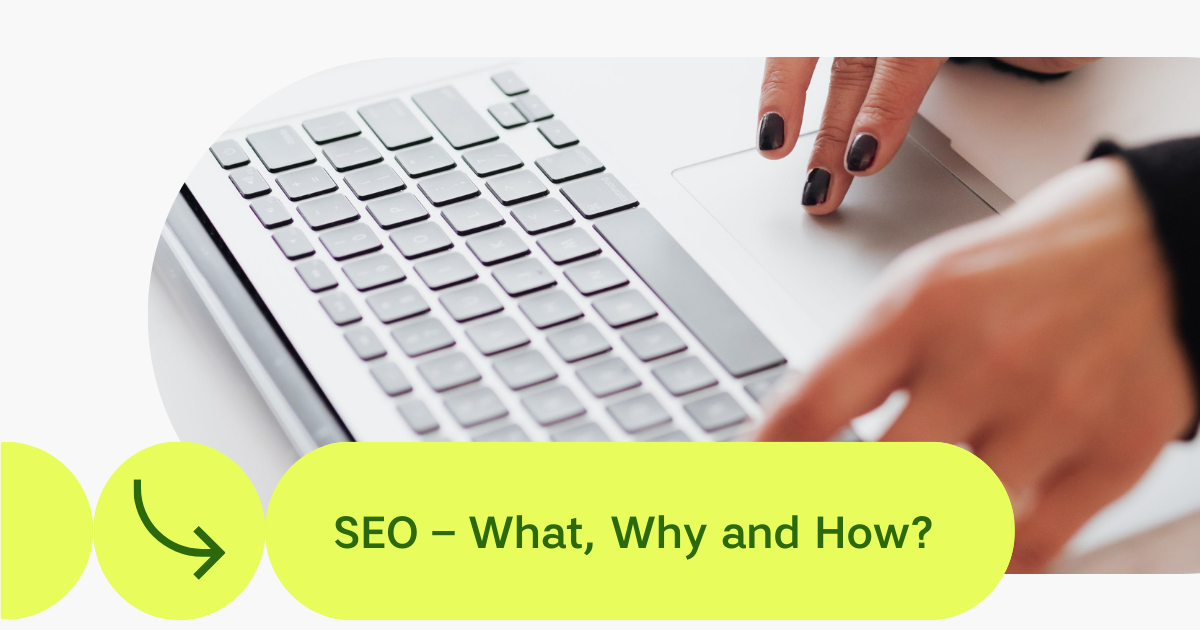What?
SEO stands for “search engine optimization.” In simple terms, it means the process of improving your site to increase its visibility for relevant searches. The better visibility your pages have in search results, the more likely you are to garner attention and attract prospective and existing customers to your business.
Why?
Website visibility
75% of searchers never go past the first page of search results — this is why it is so essential to rank on the first page of Google.
One of the most important functions of SEO is increasing visibility, which means making it easier for prospects to find you when they search for something you have to offer. Visibility is directly related to your ranking.
The higher you rank on a search engine result page (SERP), the more likely prospects are to see you and click through to your site. The more effective your SEO efforts, the higher your ranking and the better your visibility, which is especially important when you consider that a quarter of web users never click past the first SERP.
Website ranking
Increased web traffic is one of the main goals of SEO, and you increase traffic when you increase visibility and rankings. Consider this for a moment: nearly 33% of clicks go to the first ranking page, and the first five listings get over 75% of all clicks.
If you want more prospects to find your website through a search engine, then you need SEO practices that will help you rank among the top five positions, and ideally number one.
Authority
The concept of authority is relatively new in SEO, but it’s becoming increasingly important to search engines because it’s becoming more important to web users. Essentially, authority means that your website is trustworthy, high quality, relevant, and has something to offer. The more authority your site has, the higher your ranking will be, and the more prospects will come to trust your brand.
Creating a Better Visitor Experience
Another reason SEO is critical is because all the time you put into generating great content and optimizing your site with on-page SEO improves the usability of your site, and this creates a seamless and positive customer experience.
How?
-
Write an optimized Title Tag and Meta Description and URL
Title tags are clickable headlines that appear in search results and are extremely critical from an SEO perspective. as part of your keyword strategy, keywords with the highest volume should be in your title, keywords with average volume should be in your headings, and those with the least volume could be used in your paragraphs.
Checklist for a good title:
- It is short (under 70 characters and within 8-12 words)
- It is actionable—I promise to guide the reader to an answer
- It is optimized for search engines and for readers.
A meta description tag should generally inform and interest users with a short, relevant summary of what a particular page is about. They are like a pitch that convinces the user that the page is exactly what they’re looking for.”
Google typically truncates meta descriptions to 155–160 characters, so make sure you provide an accurate summary of your content while keeping it under 160 characters.
“A site’s URL structure should be as simple as possible. Consider organizing your content so that URLs are constructed logically and in a manner that is most intelligible to humans
Use also keyword-rich URLs: Always include your target keywords in the URL to increase your chances of ranking better in search results.
-
Optimize your images
If you don’t want Google to randomly choose a picture to go with your featured snippet, make sure your images are optimized (this means adding an alt-description to them, and giving a name that explains what you see on the picture and is optimized with the correct keywords. The ALT tags of your images you can find in the back-office of your site.
-
Check page speed & mobile experience
If your site takes a long time to load, you are going to have a lot of frustrated users, and your rankings will drop.
There are several free tools that can help you check your page speed, including Google’s very own google page speed check. They will provide you with some tips and tricks to optimize your speed. Definitely check your mobile score and how to improve it.
-
Align your Content with search Intent
If you would like to rank your pages on page 1 of Google in 2021, you need to understand the concept of search intent and create content that aligns with user intent.
There are four common types of search intent:
Informational: A search falls under informational intent when the user is looking for specific information. It can be a simple search like “what’s the weather today?” that provides instant results or something complex like “best SEO strategies” that requires a more in-depth explanation.
Navigational: In this case, the searcher is looking for a specific website or app. Common examples of navigational searches include “Facebook login”
Commercial: The intent behind a search is commercial when the user is looking for a specific product but hasn’t made the final decision yet. For example, searches such as “best cameras” and “best iphone cases” are all commercial searches.
Transactional: Here, the intent is to buy. The searcher has already made a decision to buy a specific product or tool. Examples include searches such as “buy Nikon d500,” “buy Macbook Air,” and “buy groceries online.”
- Use Internal Linking
Internal links are important because they establish an information hierarchy for your website and also help Google get a deeper understanding of the content on your page. Internal links can significantly boost your rankings when used the right way. It is also important for your customer user experience on the website. When linking to a relevant page and guiding the client to the information they need and want, you are helping them & create a happy client. (And it’s good for your SEO results ;) )
-
Improve the User Experience on Your Website
Google keeps a close eye on how users behave with your content. As such, user experience is one of the key factors in improving your search rankings.
Here are a few other tips to ensure that users have a good experience when they visit your site:
Use subheadings: Proper use of subheadings (H1, H2, H3) helps Google understand your content better and makes your text more accessible to readers.
Make your content visually appealing: Several studies indicate that visuals help people understand your content better. Use relevant images, videos, and screenshots to illustrate your points. Furthermore look at your navigation in the menu. Is it logic and is optimized for google?
Avoid using intrusive popups: Popups are not just bad from an SEO perspective, but they also end up annoying your visitors. Since 2017, Google has been penalizing sites that use intrusive popups. So use popups sparingly. If it is absolutely necessary for you to use them to grow your email list, use exit-intent popups, or display them to users who have spent at least 5 minutes on your site.
-
Focus on getting more authoritative backlinks
At the Dot Society we always advise our clients to have an optimized media mix with traffic coming from owned media, paid media & earned media. The last one is all the traffic coming from referral, press, articles and brand lovers. This linking is super important for the trust & reliability of your products. Google still considers backlinks to be a key ranking signal. Google recognizes backlinks as votes of confidence.
If your web pages have a high number of backlinks, it increases your chances of ranking higher in search results. As a result, it is important that you focus on building backlinks for your website.
SEO is a process, which you should always keep investing in. It will pay off! Need extra help? Contact us and we’ll take a look at your current SEO situation.
Curious about even more trends in digital marketing for 2021? Read it here.
This post is also available in: Dutch




